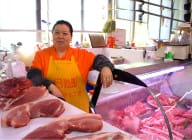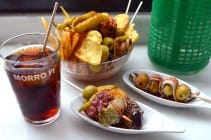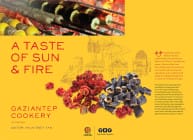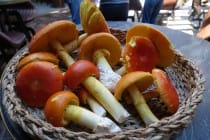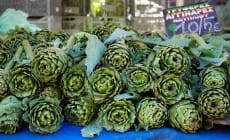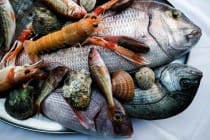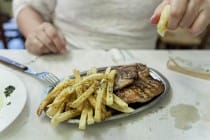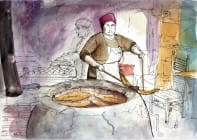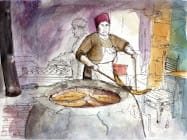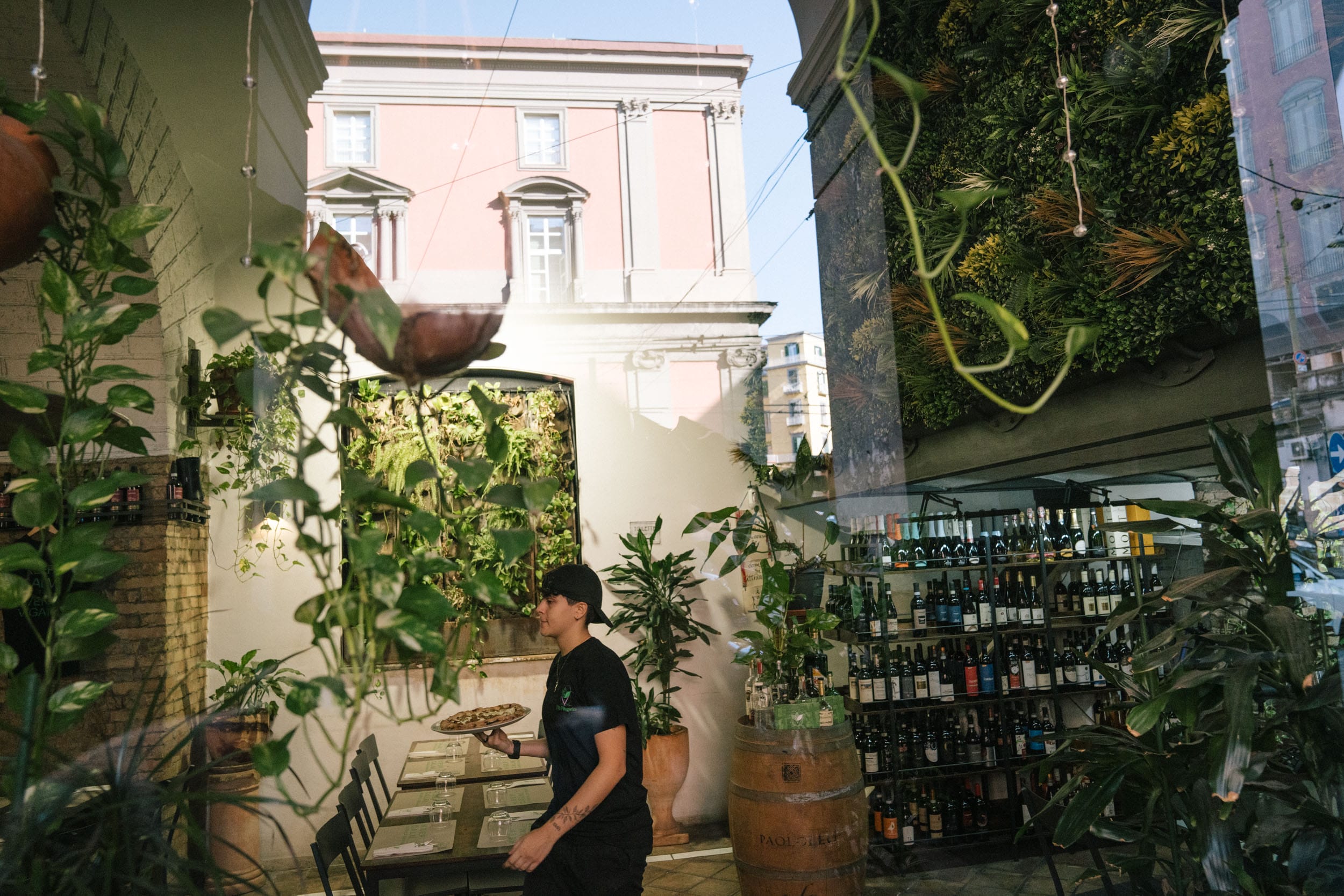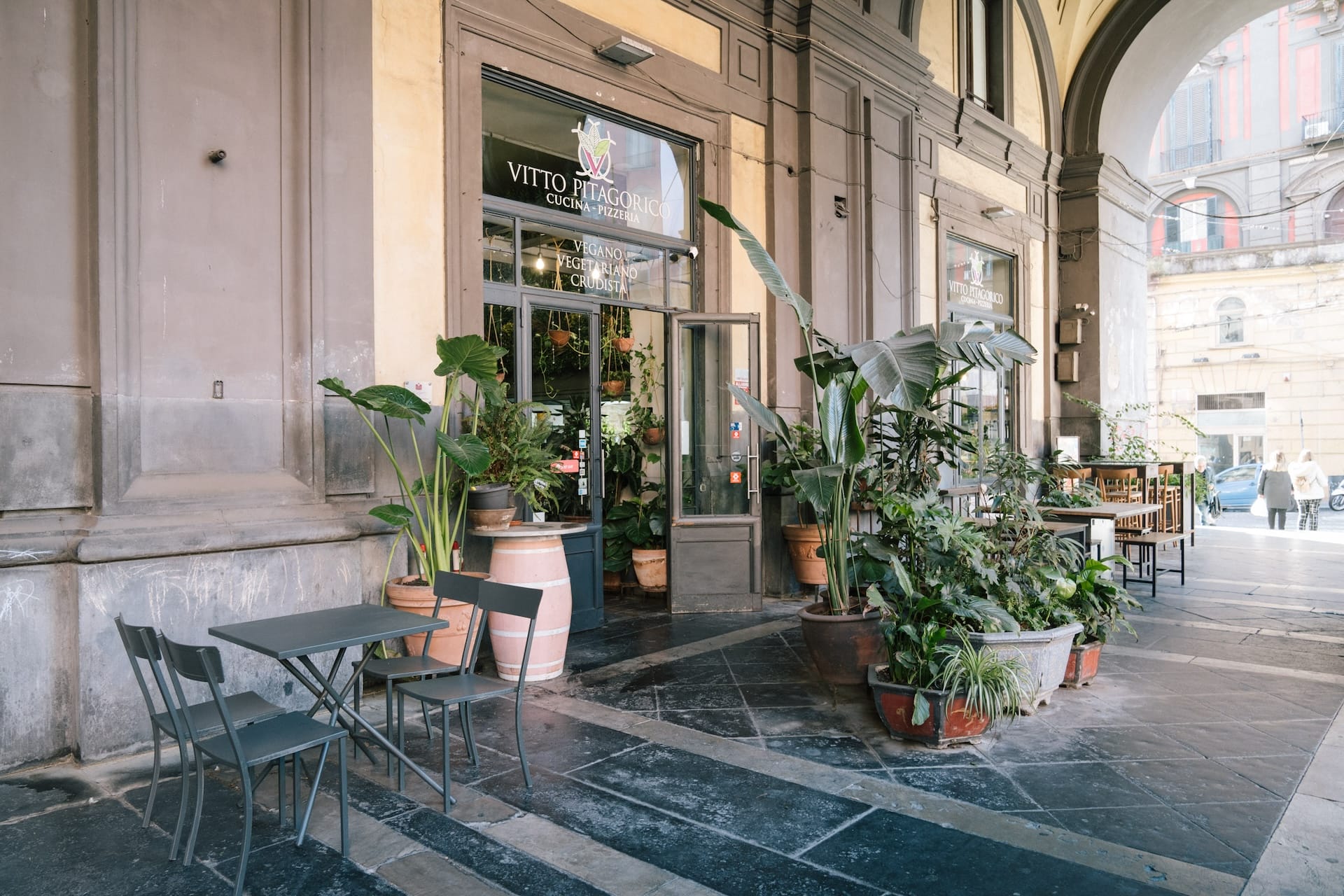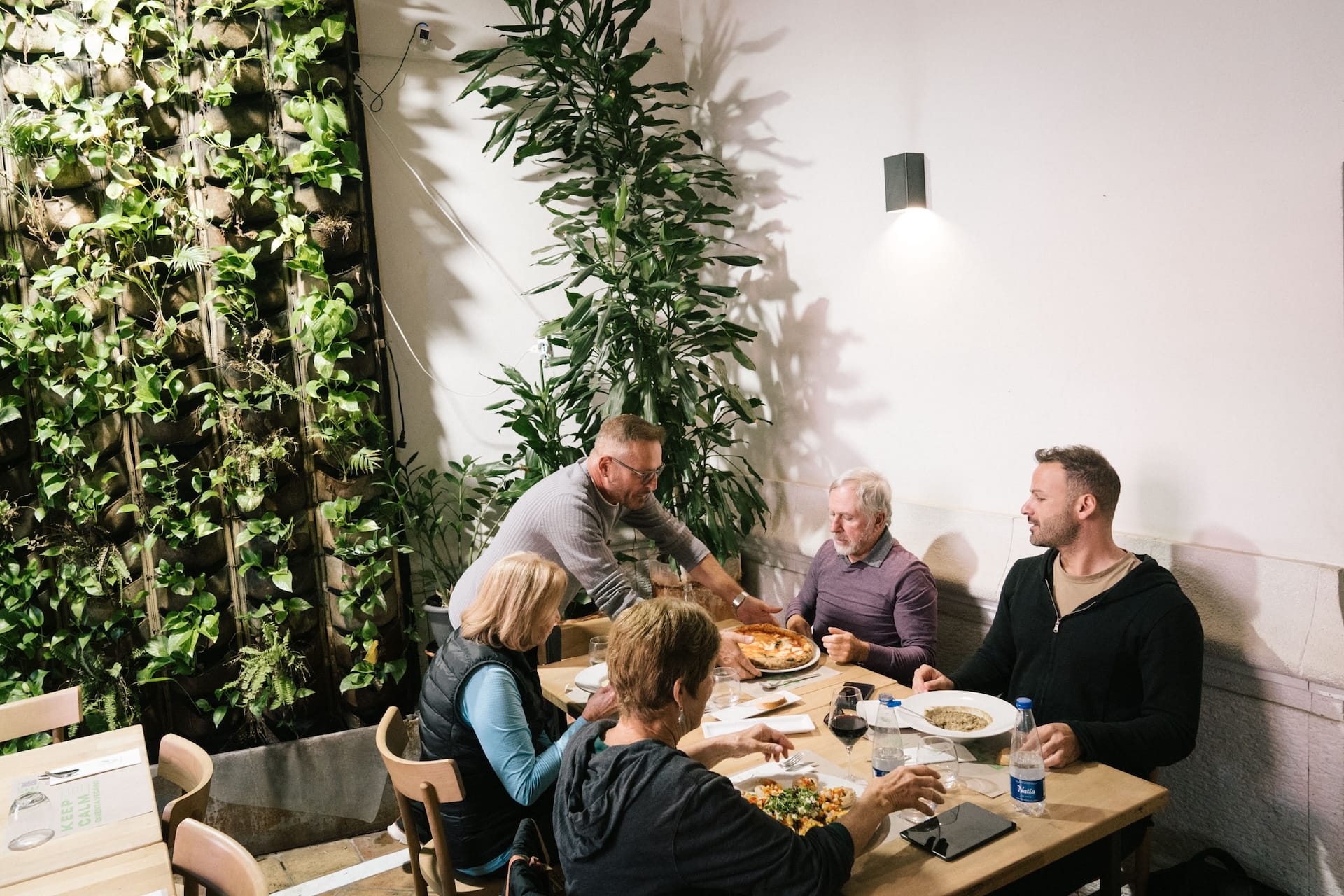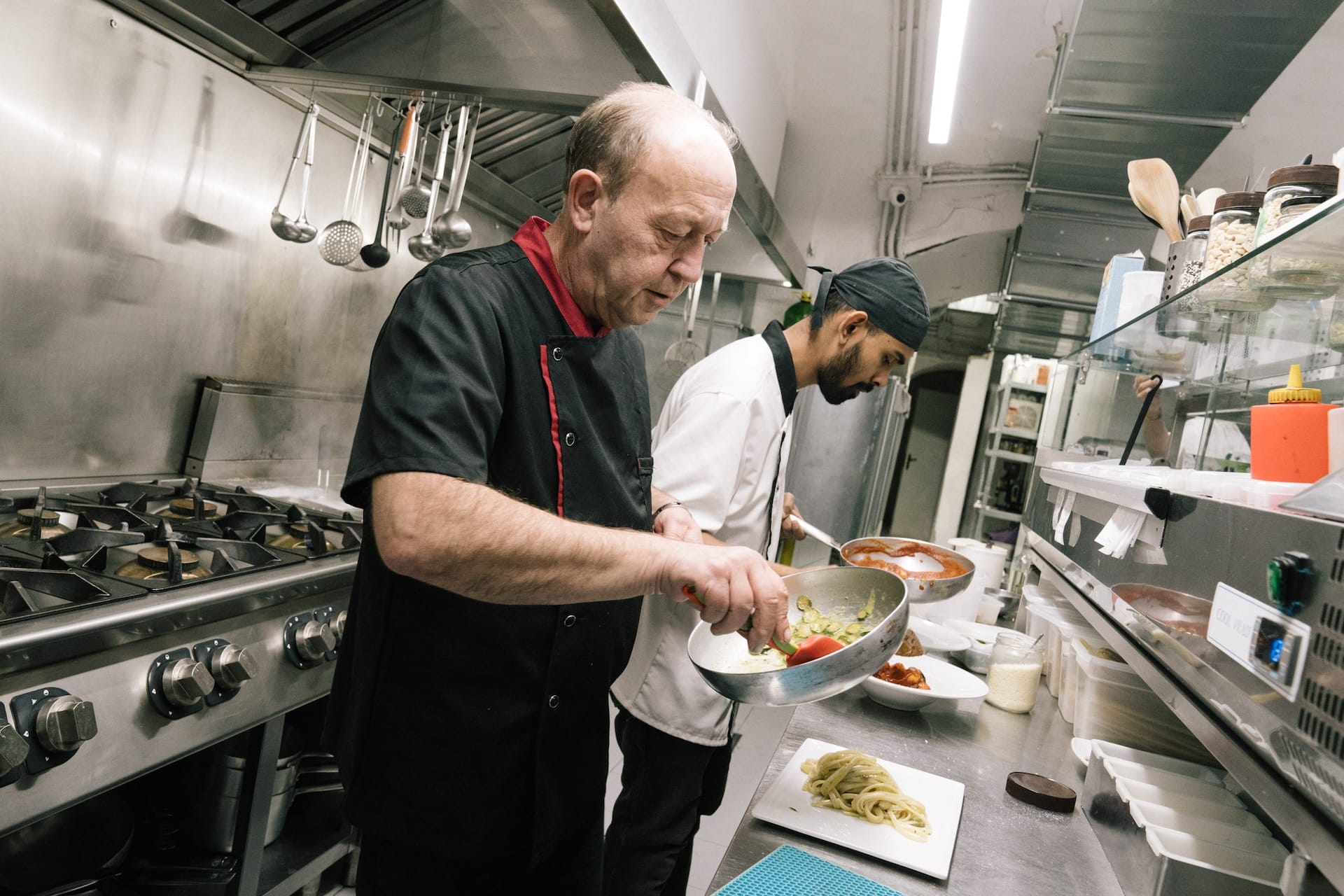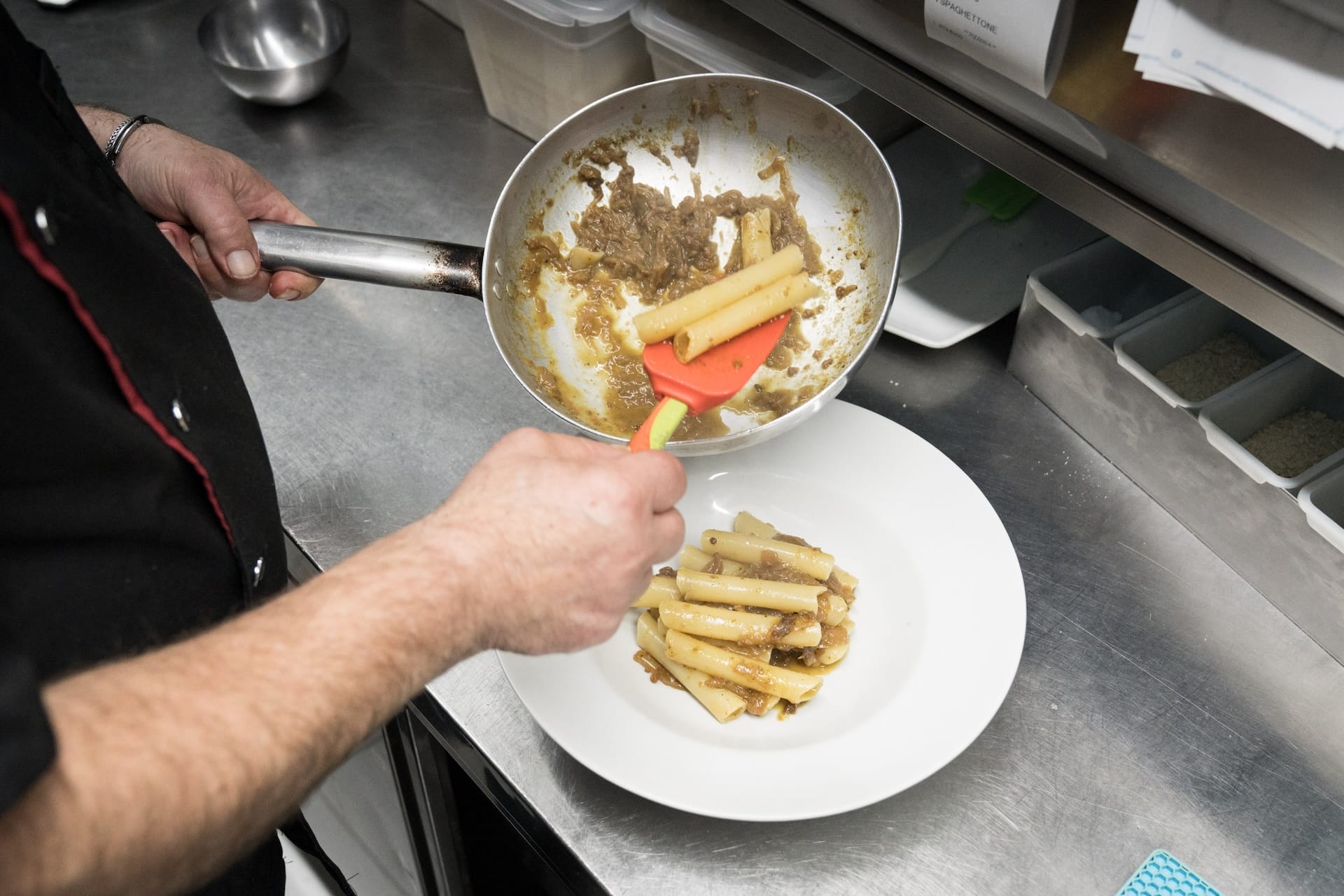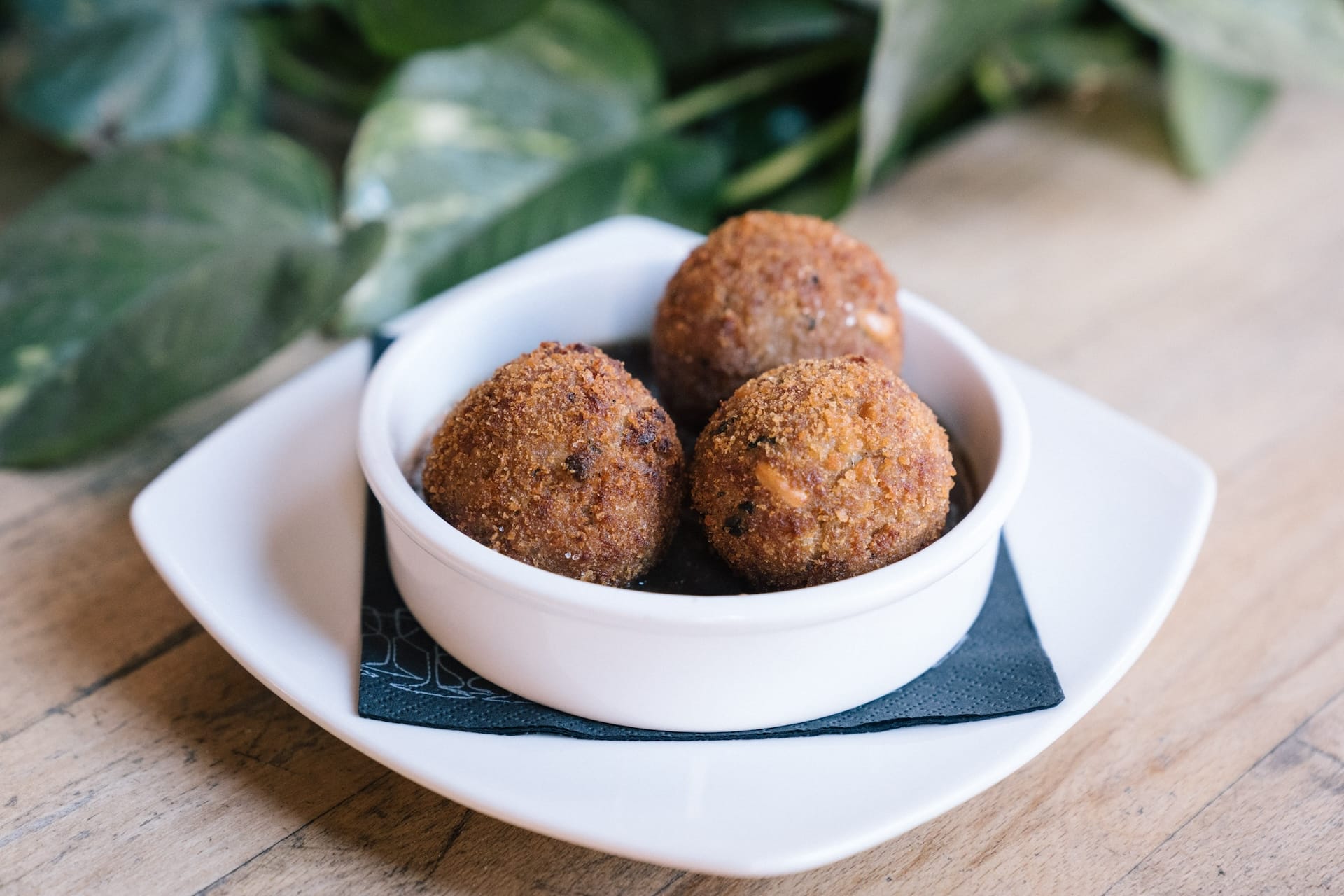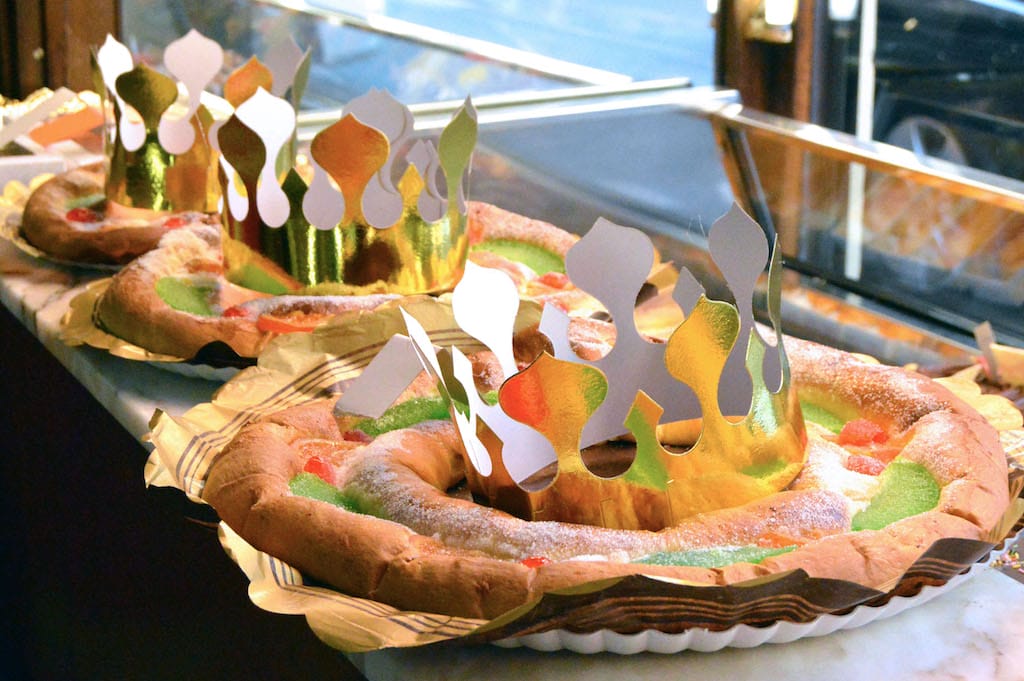Long before Neapolitans fell in love with dried pasta – a luxury food mainly reserved for the nobles until the late 1800s and only later a popular, filling meal – and earning their reputation as mangiamaccheroni (pasta eaters), they were called mangiafoglie – literally, “leaf eaters.”
The moniker referred to the habit of consuming significant quantities of the vegetables that grow in the thriving farms at the foot of Vesuvius or in the countryside areas encircling the city center. Common folk cleverly found simple yet effective ways to amplify the vegetables’ flavor, often frying them or accompanying them with tomatoes, herbs, and other ingredients, while precious products such as raisins and pine nuts were – again – the prerogative of the noble class.
This is why, still today, it’s not difficult at all to find a wide range of what we would now call “plant-based” recipes as an important part of the vast traditional Neapolitan food repertoire. Take, for example, the ecumenical marinara pizza, in which the heavenly combination of tomato sauce, garlic, oregano, and extra virgin olive oil is a simple pleasure. In summer, tasty side dishes such as melanzane a funghetto (cubes of fried eggplants seasoned with a simple tomato sauce) or zucchine alla scapece (thin sliced fried zucchini seasoned with oil, vinegar, and garlic) are a treat for everyone – vegetarian, vegan, or otherwise.
That said, it’s also true that many local vegetable-based recipes might hold secret ingredients, making it tricky to explore the alluring traditional cuisine for those who – for whatever reason – want to avoid animal proteins: the delicious escarole with black olives and capers (or raisins) has probably been spiced up with a few preserved anchovies; a mouthwatering pie could hide lard in its dough; an earthy and comforting dish of pasta e fagioli (pasta with beans) or an intense tomato sauce might be fortified by adding a few pork rinds, while the ubiquitous pasta e patate is often bolstered not only by the optional layers of melted provola cheese but also by cheek lard and Parmesan rinds.
And, of course, the true stars of authentic Neapolitan cuisine are almost always dishes built upon the glorious encounter between the world of plants and that of animals: think the fierce minestra maritata (a rich, festive soup in which wild herbs “marry” chicken broth and pork sausages), the famous tomato and beef ragù, or the creamy and lavish Genovese, an onion-and-beef sauce served with pasta. For the herbivores among us, these dishes could make a trip to Naples either an obstacle course or a repeated sacrifice.
In search of a solution to this dilemma, we ended up in Galleria Principe, the restored art-deco gem of the city right in front of the National Museum. Harboring under its arcades exciting places such as Lazzarelle Bistrot and ScottoJonno, since 2014, the Galleria has also hosted the eatery Vitto Pitagorico.
Set at one of the external corners of the galleria and open every day for lunch and dinner, its tables also occupy part of the colonnade and are ideal for sipping a smoothie or a drink. This colorful, unpretentious, and verdant restaurant offers a healthy, plant-based Mediterranean menu with a touch of Asian influences and some deep dives into typical Neapolitan cuisine. The selection, thoroughly inclusive, caters to vegetarians, vegans, and those with gluten-free dietary needs – there’s even a selection of pizzas.
Owner Michele Semplice recalls: “When I started the project, I already had a background in the ‘normal’ food business. Being vegetarian for over ten years back then, I wanted to launch a vegetarian and, most of all, healthy restaurant. Yet, while planning the project, I soon decided to open a totally vegan place. Such a shift was inspired by my studies on the history of Naples: I found out about the concept of ‘Vitto Pitagorico’ [the Pythagorean diet], a vegetarian regimen endorsed by the Tuscan doctor Antonio Cocchi, which emerged from a European medical conference hosted in Venice and was supported by the Naples royal court. Over two hundred and fifty years later, I decided to dust off the Bourbon idea and bring it back to life with this restaurant.”
To accomplish this, Semplice and his team didn’t limit themselves to salads and soups. The menu has gradually expanded since the restaurant’s opening to embrace the ever-growing request of a varied clientele almost equally composed of tourists and locals searching for raw, vegan, and vegetarian options. “Those eating meat or fish, but curious to try something different and learn more, are also welcome,” manager Antonio Limatola – an omnivore himself, in charge of the recently launched franchising project – explains. “Eating at Vitto Pitagorico is a bit like feeling at home.”
It can even feel like eating at a traditional Neapolitan home: while the selection includes inventive takes on raw food and a number of global recipes born from the contributions of the international staff, the core of the menu is still based on interesting plant-based versions of the most iconic Neapolitan staples, featuring home-made vegan “cheeses” and sauces.
Dishes span from vegan Greek moussaka with soy ragù and béchamel sauce to Sri Lankan kiri bath (basmati rice and coconut milk with sweet and sour sauce, onion cream, and guacamole). Raw Spaghetto (zucchini spaghetti with beetroot extract with pepper and cashew sauce and sesame seeds) or Raw Food Lasagna (zucchini puff pastry with cashew ricotta and raw ragù) are menu favorites among raw food devotees and a great option on hot summer days.
But the presence on the menu of items such as Meatballs with ragout – in which the handmade fried balls are made of soy granules, soymilk cream, and chickpea flour seasoned with herbs, garlic, coriander, pepper, and pine nuts, just like a proper Neapolitan grandma would do with meat, and wrapped in a long-cooked and concentrated vegan ragù, puts a smile on every face. The same goes with Genovese, with hand-broken Maccheroni a Candela di Gragnano PGI (a traditional pasta shape with protected geographical indication status) dressed by a creamy sauce made of onion and soy ragù (though our omnivorous palate did miss the stinging taste of Pecorino, to be honest).
Gragnano Spaghetti al Pomodoro, with fresh cherry tomatoes, basil, and extra virgin olive oil, is naturally vegan, just like the handmade Sorrento potato-and-semolina gnocchi with tomato sauce. While Black Sea (fresh hand-made scialatielli pasta with nori and wakame seaweed cream, lime, lemon, and Sulmona black garlic) delivers a definite marine taste without adding fish. Desserts include original homemade raw or vegan and gluten-free options, and vegetarian semifreddos (frozen treats) and trifles by local pastry lab Officine Zuccherine.
“Every traditional dish is carefully studied, replacing animal ingredients with plant-based alternatives,” Semplice explains. “For example, ground meat for meatballs and Genovese is replaced with dehydrated soy, but the entire preparation process is strictly respected. Some dishes derive from family recipes, and I try to find the ancient taste of my grandmother’s and mother’s cooking. Before being added to the menu, each dish is tested and refined until it fully reflects tradition.”
Published on November 28, 2024
















